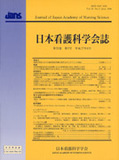Japanese
English
- 販売していません
- Abstract 文献概要
- 参考文献 Reference
- サイト内被引用 Cited by
要旨
脳卒中後遺症としてのしびれや痛みをもつ人の感覚や表現の特徴とその対処を明らかにすることを目的に, 25名の参加者に半構成的インタビューを行った. しびれや痛みは, (1) 個々の参加者によって多様に表現される一方, 表現しがたいとする人も少なくない. (2) 明確に区別されにくく, 人によってはしびれが強くなると痛みに近い感覚として体験される. (3) 気象の変化等による深部や内部のしびれ・痛みとして知覚される場合と雨風が直接当たることで誘発される皮膚表面のしびれ・痛みといった一見相反する感覚をあわせもつ. (4) 眠ると感じない, 他に意識が向いている時は忘れている, しびれ・痛みに意識が集中すると強く感じられる等の特徴が見出された. また, しびれや痛みは, それ自体として知覚されるだけでなく 〈感覚の不確かさ〉〈温冷感覚の変化〉〈感覚の違和感〉 といった特異な感覚を伴っている. この痛み・しびれは, 脳卒中者の生活に多様な影響をもたらしており, 参加者は〈しびれ・痛みそのものへの対応〉〈身体との折り合い〉〈道具世界との協調〉〈周囲との付き合い〉〈自分自身と向き合う〉といった対処で生活を維持しようと努めていた.
Abstract
Semi-structured interviews were conducted with 25 participants to examine the sensations experienced and descriptive expressions used by people who suffer numbness and pain as the after-effects of a stroke, and to identify ways in which the participants deal with those sensations. We learned the following. (1) While individual participants described their experiences with numbness and pain in a variety of ways, many participants said that the sensations were difficult to describe. (2) Participants found it difficult to distinguish between numbness and pain. Some participants indicated that as their numbness grew more pronounced, it became almost painful. (3) Participants experienced what seemed to be contradictory sensations, sometimes feeling deep, internal numbness and pain due to changes in the weather or other factors, while also feeling numbness and pain on the surface of their skin induced by direct contact with wind and rain. (4) Participants did not feel numbness and pain while sleeping and would forget about it when their attention was focused elsewhere. When their attention was focused on the numbness and pain, the sensations were more pronounced. Also, numbness and pain were felt not only on their own, but also in combination with other abnormal sensations, such as a“sense of uncertainty,”“changes in sensation of hot and cold,”and a“sense of discomfort.”Numbness and pain have wide-ranging effects on the lives of stroke victims, and the participants of this study reported that they have striven to maintain their lifestyles by“learning to cope with the pain and numbness,”“coming to terms with my body,”“adjusting to living in a world of health equipment,”“becoming involved with others in my surroundings,”and“focusing on myself.”
Copyright © 2005, Japan Academy of Nursing Science. All rights reserved.


